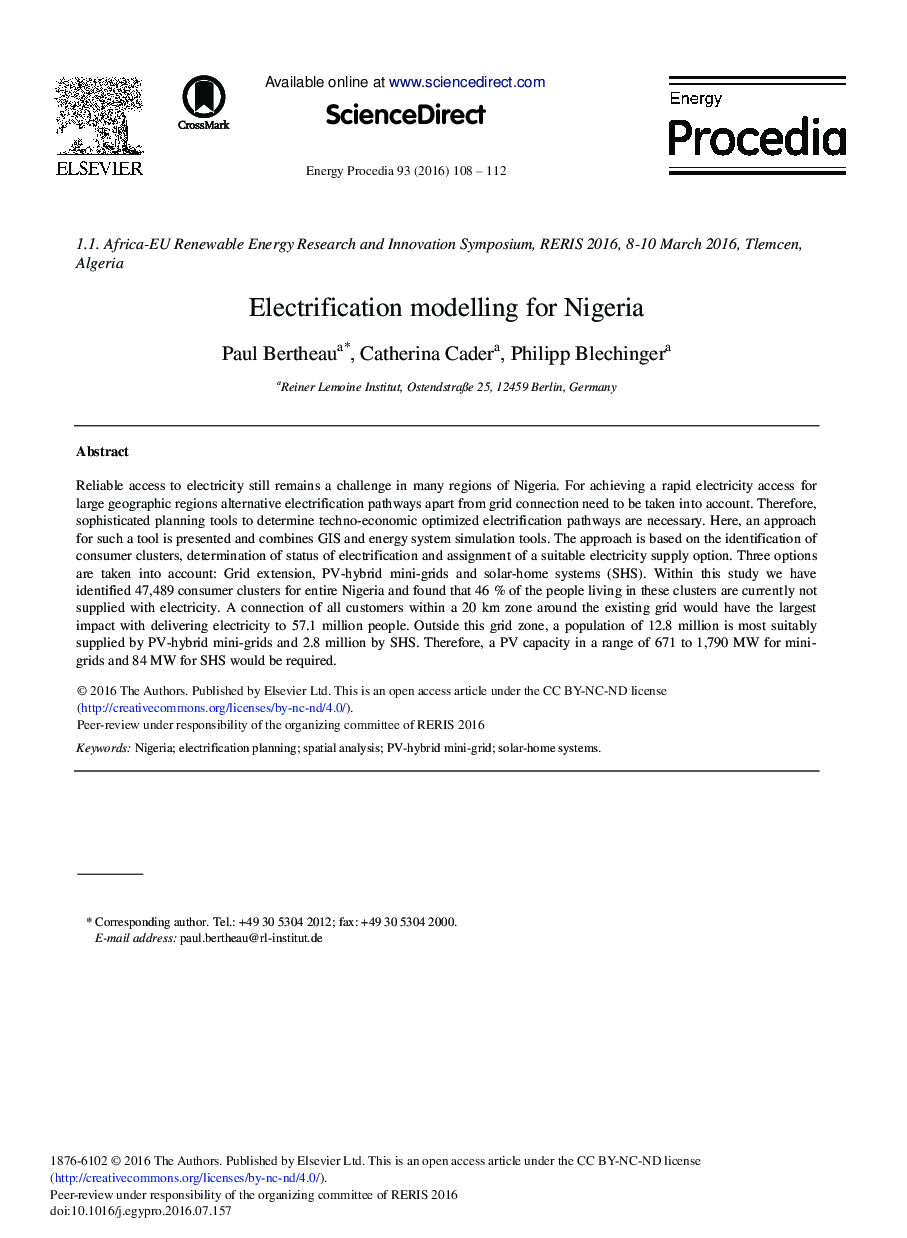| Article ID | Journal | Published Year | Pages | File Type |
|---|---|---|---|---|
| 5447032 | Energy Procedia | 2016 | 5 Pages |
Abstract
Reliable access to electricity still remains a challenge in many regions of Nigeria. For achieving a rapid electricity access for large geographic regions alternative electrification pathways apart from grid connection need to be taken into account. Therefore, sophisticated planning tools to determine techno-economic optimized electrification pathways are necessary. Here, an approach for such a tool is presented and combines GIS and energy system simulation tools. The approach is based on the identification of consumer clusters, determination of status of electrification and assignment of a suitable electricity supply option. Three options are taken into account: Grid extension, PV-hybrid mini-grids and solar-home systems (SHS). Within this study we have identified 47,489 consumer clusters for entire Nigeria and found that 46% of the people living in these clusters are currently not supplied with electricity. A connection of all customers within a 20Â km zone around the existing grid would have the largest impact with delivering electricity to 57.1 million people. Outside this grid zone, a population of 12.8 million is most suitably supplied by PV-hybrid mini-grids and 2.8 million by SHS. Therefore, a PV capacity in a range of 671 to 1,790 MW for mini-grids and 84 MW for SHS would be required.
Keywords
Related Topics
Physical Sciences and Engineering
Energy
Energy (General)
Authors
Paul Bertheau, Catherina Cader, Philipp Blechinger,
